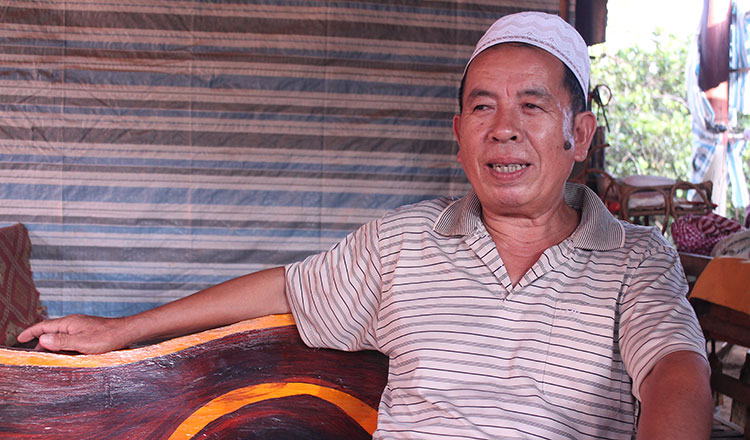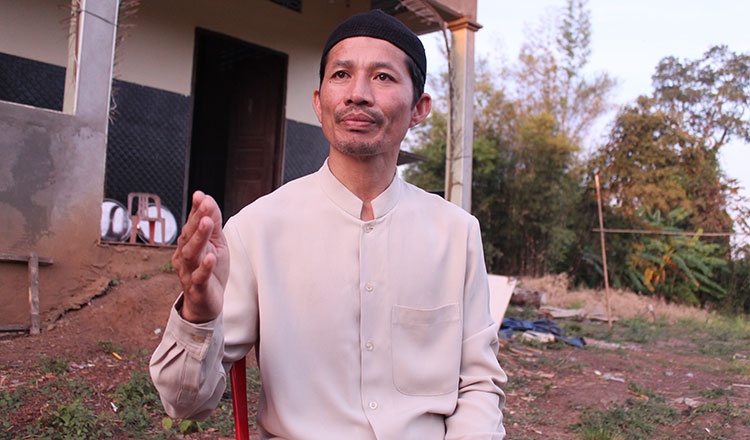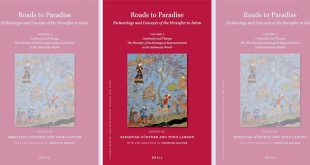We are as Shia and Sunni living together in peace even though we share different ideologies of the Islamic faith,” Mr Math, who studied Shia Islam for seven years in Iran, said
Uneasiness is in the air in the small, predominantly Muslim village of Vihear Sambo in Tboung Khmum province. From the time the villagers first settled, they have always been practising Sunni Islam.
However, things began to change in the late 2000s when an increase of Shia Muslim manifested itself in the area, mostly through conversion, following the arrival of a France-based, Iran educated Shia preacher who began to spread Shia teachings in the area.
Despite the initial cold reception, relations between followers of the two branches of Islam seem to have improved since Khmer Times first ran the story in 2014.
The differing beliefs were trumped by the shared life experiences of having lived through the atrocities and tragedies that marked Cambodia’s modern history. In the past the presence of Shia followers could have led to a communal backlash and widespread rejection in countries such as Indonesia, the initial tension didn’t have the chance to evolve into sectarian conflicts in this village.
The village has a population of about 2,000 – almost entirely composed of Cham-Muslim people, a majority of whom are Sunni with about 340 families, while another 42 families are Shia. Most are farmers who grow rice, cassava and some rubber in the village.
Chi Van’at, 65, the Sunni Imam of Vihear Sambo mosque, said that even though the Muslim sects are different, communication and relations between the two sects had been improving gradually in the past two to three years.
“We talk with each other, and we have not had much problems with each other in the village.”
He added that Vihear Sambor has a higher concentration of Shia followers, compared to other villages and provinces where Muslims constitute a minority.
“Actually, only my village has this large number of Shia,” Mr Van’at said.
Mr Van’at added that the two branches even attend each other’s wedding ceremonies.
He added that these families used to be Sunni before the arrival in 2010 of Mahamed Zin, who went to live in France to escape the atrocities of the 1970s, and after travelled to Iran where he studied and embraced Shia beliefs and practices.
Sitting in front of the construction site of the after-school academy for Muslim children, local Shia community leader Seth Math, 40, reflected on the situation.
“We are now living together in peace even though we share different ideologies of the Islamic faith,” Mr Math, who studied Shia Islam for seven years in Iran, said.
“I got a scholarship to an Iranian University for religious studies in 2009. Then I became a leader of the Shia community in my village when I returned,” he explained.
When asked about the main reason to convert to the Shia doctrine, Mr Math claimed the Shia branch is greater and of higher moral for every Muslim.
“I understood Shia Islam after I studied and researched it. Then I decided to believe in it because I consider it the greatest among the branches of Islam,” he said.
“First, when our group decided to convert to Shia Islam, we could hardly communicate with each other in the village, but relations have returned to a good atmosphere,” he said. “We are now constructing our own school for our children and we plan to construct our own mosque soon.”
Mr Math added that his community has three volunteer religious teachers who also studied in Iran since 2010.
“All of them also spent seven years in Iran for religious studies like me and they have been teaching our children since they came back recently.”
While Sunni and Shia are at peace in Vihear Sambo, it is not the case in the rest of the world, especially in the Middle East, where Sunni constitute a majority backed by Saudi Arabia and the Presian gulf, while Shia are widely spread in Iran and Iraq, and constitute an elite minority in countries such as Syria and Lebanon.
source: khmertimeskh
 Ijtihad Network Being Wise and Faithful Muslim in the Contemporary World
Ijtihad Network Being Wise and Faithful Muslim in the Contemporary World
